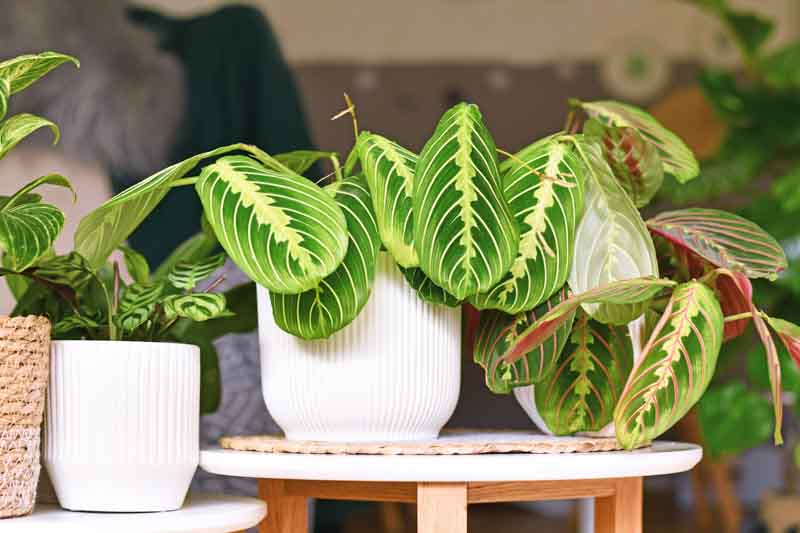Maranta
The Maranta genus, often celebrated for its strikingly patterned foliage and unique habit of folding its leaves upright at night, belongs to the family Marantaceae. This fascinating behavior, resembling hands in prayer, has earned it the common name “Prayer Plant.” Native to tropical Central and South America, Maranta species thrive in the understory of rainforests, where conditions are warm and shaded.
Prayer plants are not hardy in cooler climates and are typically grown as houseplants in temperate zones. They prefer environments that mimic their native habitat: warm, humid, and away from direct sunlight. While not frost-tolerant, they can survive outdoors in USDA hardiness zones 11-12, making them suitable for year-round outdoor growth in some tropical and subtropical regions.
The foliage of prayer plants is their most notable feature, with leaves often variegated in shades of green, red, white, and sometimes purple. The leaves are broad and flat, displaying intricate patterns that include spots, stripes, and veining, making each species and cultivar distinct. This decorative foliage makes prayer plants highly prized as ornamental indoor plants.
Regarding uses, prayer plants are predominantly grown for their aesthetic appeal. They add a touch of the tropics to interior spaces, such as homes, offices, and conservatories. Beyond their beauty, Marantas have several benefits. They are known to improve air quality by filtering out certain environmental toxins, contributing to a healthier indoor atmosphere. Additionally, their relatively easy care requirements make them suitable for gardening enthusiasts of all levels.
Another advantage of the prayer plant is its non-toxicity. It is safe for pets and humans, making it a popular choice for households with animals and children.

